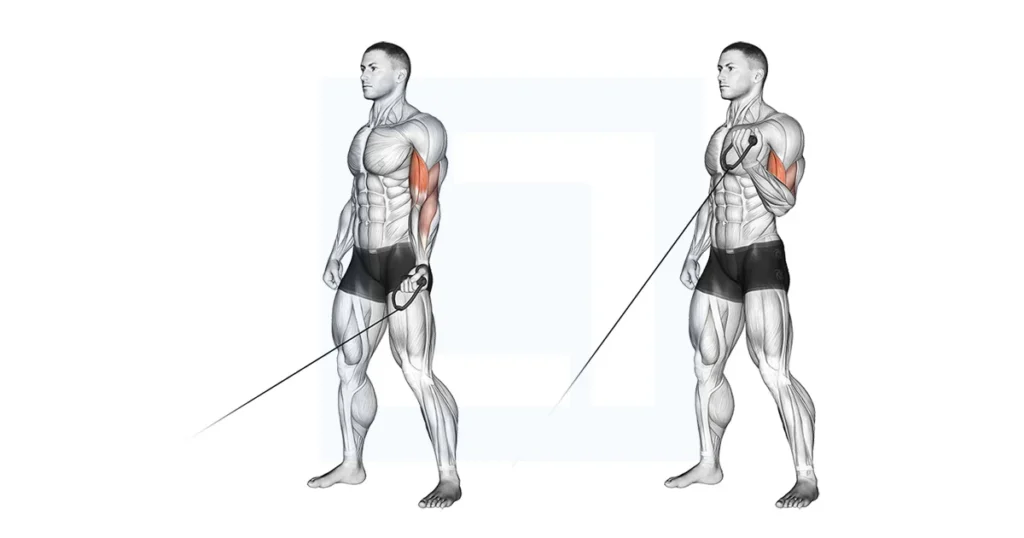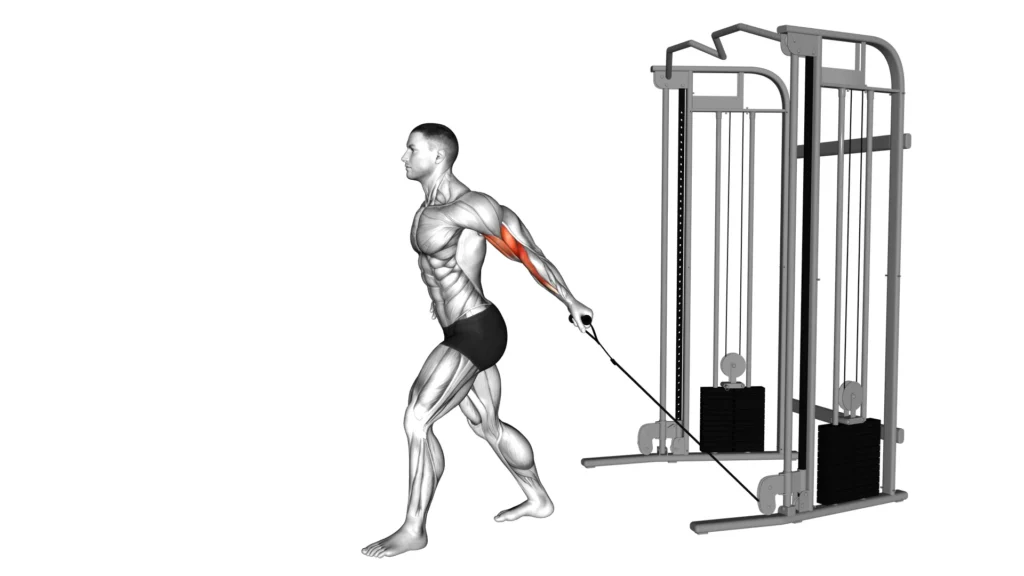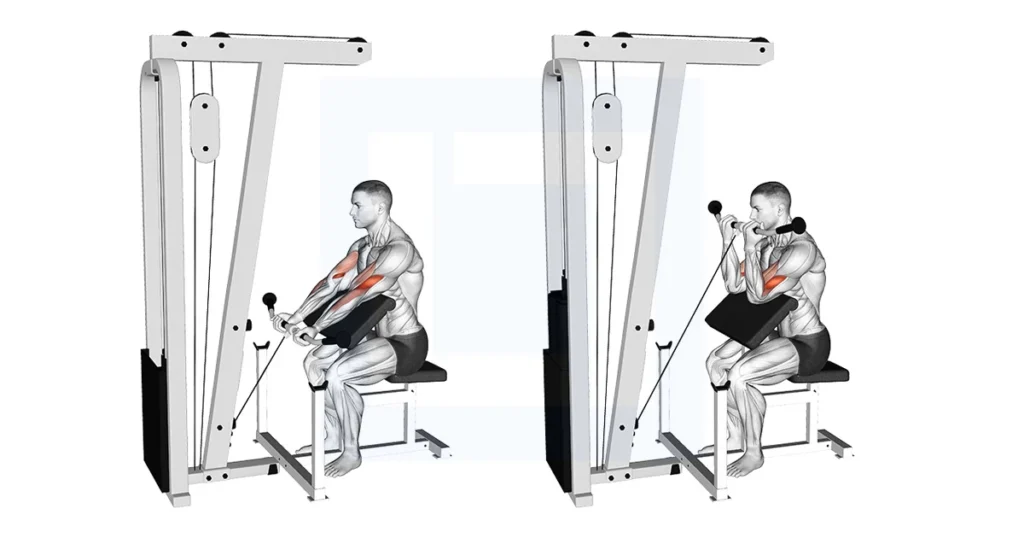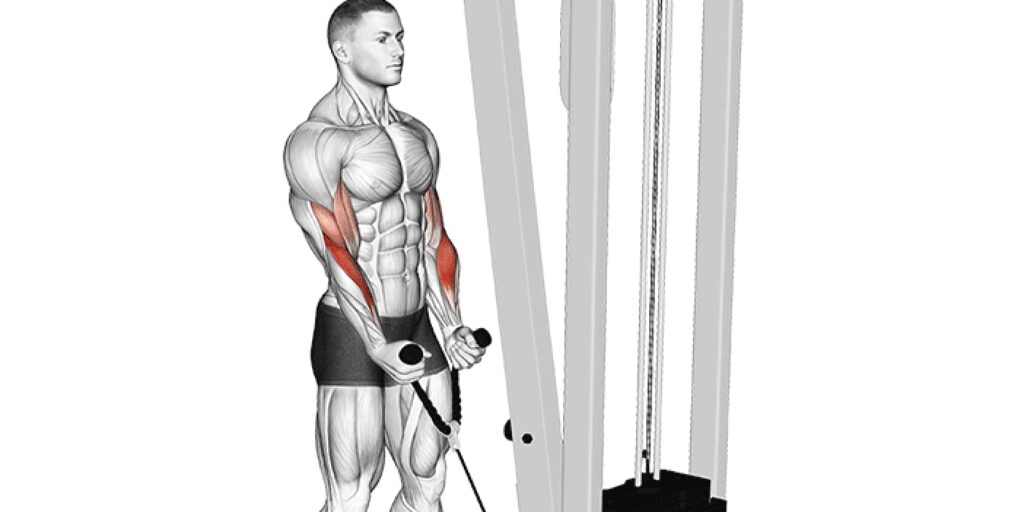Biceps have long been seen as the ultimate show muscle — the part of your physique that gets the most attention, whether you’re wearing a t-shirt or flexing in the mirror.
However, building truly impressive biceps requires more than just heavy barbell curls or random dumbbell sets.
To sculpt arms that not only look strong but are functionally powerful, you need to understand how to train the biceps through their full range of motion, with consistent resistance and precision. This is where cable bicep exercises come in.
Cables provide a major advantage over free weights by offering constant tension, meaning your biceps are under load during both the concentric (lifting) and eccentric (lowering) phases of every repetition.
Unlike dumbbells, where resistance drops off at the top or bottom of the movement depending on gravity, cable machines allow you to control the direction of resistance,
giving you far more freedom to hit the muscle from unique and effective angles.
In this article, you’ll discover the 7 best cable bicep exercises, chosen not just for variety, but for their ability to target the different parts of the biceps and surrounding arm muscles.
You’ll also learn why cables can be a smarter choice for hypertrophy, what mistakes to avoid, and how to program these movements into a complete, effective routine.
Why Cable Bicep Exercises Are Superior for Muscle Growth
What sets cable bicep exercises apart is their ability to maintain muscular tension throughout the entire range of motion.
When you perform a traditional dumbbell curl, the biceps are only fully loaded through part of the arc, with resistance dropping off as the arm moves past certain angles.
Cables, on the other hand, keep the biceps activated from start to finish, regardless of the arm position.
This leads to several benefits:
- You’re able to isolate the biceps more effectively, with less momentum and less involvement from supporting muscles like the shoulders or traps.
- You can adjust the angle of resistance, allowing you to emphasize either the long head, short head, or brachialis depending on how you position your body relative to the pulley.
- The smooth resistance curve reduces joint strain, making it ideal for people recovering from injury or looking to train intensely without unnecessary wear and tear.
- You gain better control over tempo and time under tension, two critical variables for hypertrophy.
In fact, a comprehensive comparison showed that cable curls can produce more consistent EMG activation than free-weight curls — making them a strategic tool for muscle growth.
The 7 Best Cable Bicep Exercises for Size, Shape, and Strength
1. Cable Bicep Curl (Bar Attachment)
Attach a straight bar or EZ-bar to a low pulley, stand upright with your elbows pinned to your sides, and curl the bar toward your chest while squeezing your biceps as hard as possible.
Slowly lower back to the starting position under control.
Best for: Overall bicep development with continuous tension and strict form.
2. Single-Arm Cable Curl (D-Handle Attachment)

Stand side-on to the machine with the pulley at the lowest setting, grip the handle with your palm facing upward, and curl the weight while keeping your elbow stable and close to your torso.
Best for: Symmetry and precise targeting of the bicep’s short and long heads.
3. Overhead Cable Curl (Facing Away from Machine)
Attach two D-handles to the high pulleys, stand in the center facing away from the machine, and with your arms elevated and slightly bent, curl the handles inward toward your ears.
Best for: Long head activation and improving bicep peak.
4. Bayesian Cable Curl

Stand facing away from a low cable pulley, holding a single D-handle in the arm farthest from the machine. With the arm slightly behind your body, curl the weight forward while maintaining tension throughout.
Best for: Stretch-based hypertrophy and long head isolation.
5. Cable Preacher Curl (Using Incline Bench or Machine Attachment)

Use a preacher bench or incline bench pad in front of a low cable. Attach a bar or EZ-bar to the pulley, position your elbows on the pad, and curl with control.
Best for: Isolation and eliminating body swing for pure bicep tension.
6. Cable Hammer Curl (With Rope Attachment)

Using a rope attached to the low pulley, grip with your thumbs up and perform curls without rotating your wrists. This neutral grip targets both the biceps and the brachialis.
Best for: Arm thickness and forearm development.
7. High Cable Curl (Across Chest)
Set two pulleys at shoulder or head height, grip the handles with each hand, and curl inward toward your chest in a sweeping motion, mimicking a front double biceps pose.
Best for: Finishing sets with intense contractions and aesthetic shaping.
Sample Cable-Only Bicep Workout (Intermediate Level)
- Cable Bicep Curl (Bar Attachment): 4 sets × 10–12 reps
- Bayesian Curl (D-Handle, one arm at a time): 3 sets × 12 reps
- Overhead Cable Curl: 3 sets × 10–12 reps
- Cable Hammer Curl (Rope): 3 sets × 12–15 reps
- Single-Arm Cable Curl (Slow Negatives): 2 sets × 10 reps per arm
All exercises are performed on a cable machine to guarantee constant resistance, precision targeting, and efficient muscle recruitment throughout every rep.
Avoid These Common Mistakes in Cable Bicep Training
- Letting your elbows drift forward during curls, which shifts emphasis away from the biceps.
- Using momentum or swinging the weight, especially when fatigue sets in.
- Skipping the stretch portion of the rep, which reduces muscle fiber recruitment.
- Ignoring the brachialis and long head in favor of short-range curls.
- Training without adequate progressive overload or tempo control.
Want to Train Shoulders Next?
To complete your upper body development, don’t miss our in-depth guide on the Top 7 Best Cable Shoulder Exercises — a must-read for maximizing your delt growth using cables.
Related Reading
Biceps Anatomy Explained
To make your training more intelligent, it helps to understand the exact structure of the biceps — including the long head, short head, and brachialis. You can check out this arm muscles anatomy overview from Healthline for a visual breakdown.
Conclusion
Cable machines are not a secondary option — they’re a high-precision tool for targeted bicep development that can help you overcome plateaus, reduce injury risk, and stimulate growth more efficiently than many free weight alternatives.
By understanding how each cable variation targets different regions of the biceps and incorporating them with intent, you can build arms that are not only big, but balanced, aesthetic, and structurally strong.
Stay consistent, train with purpose, and use these 7 cable bicep exercises as part of your strategy to build arms that demand attention in 2025 — and beyond.